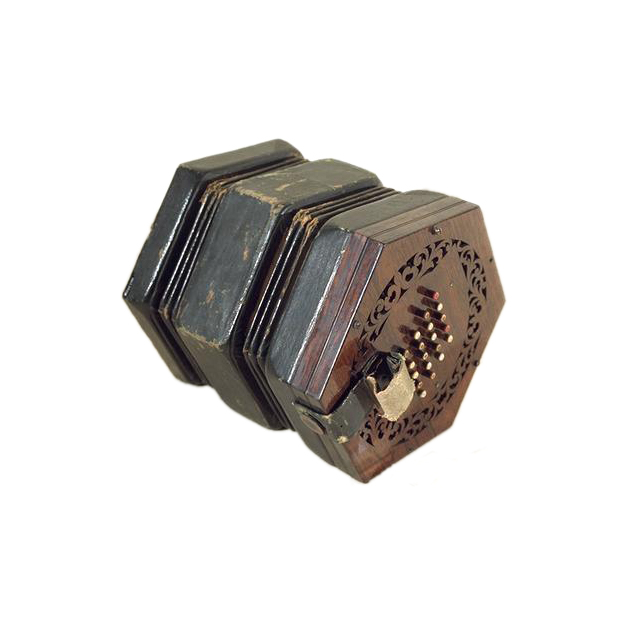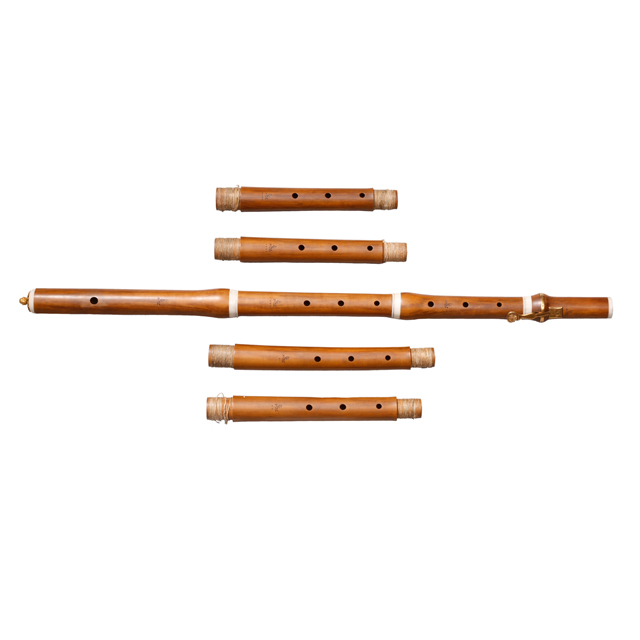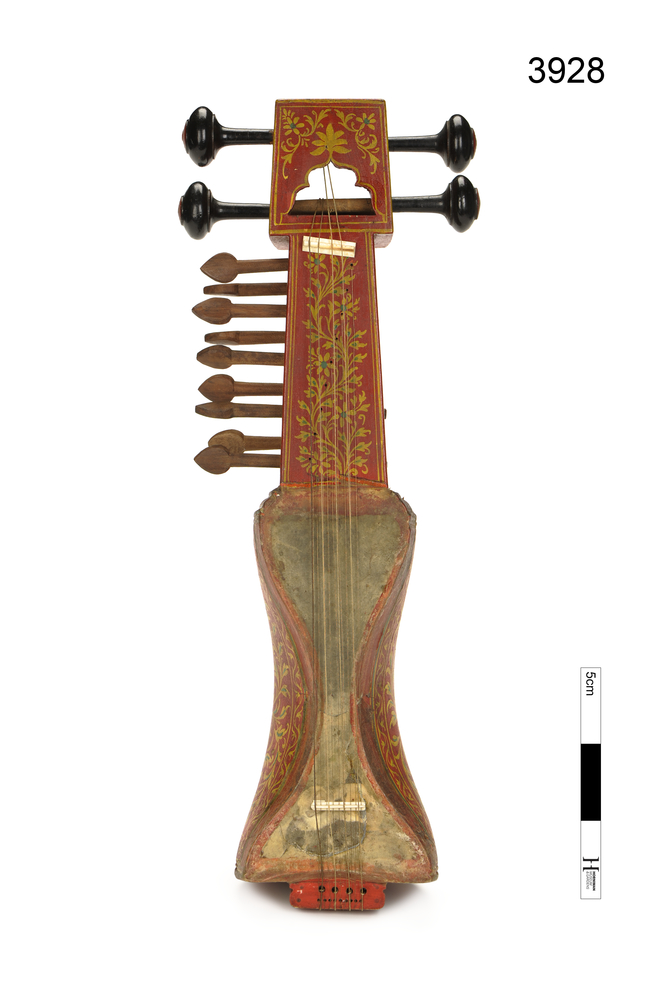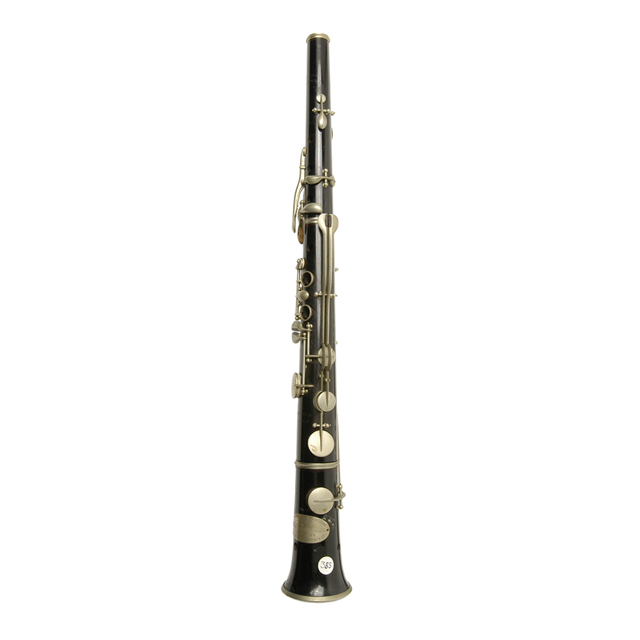
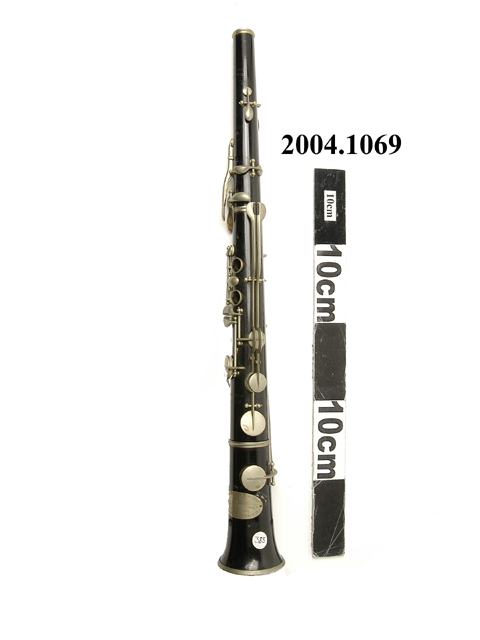
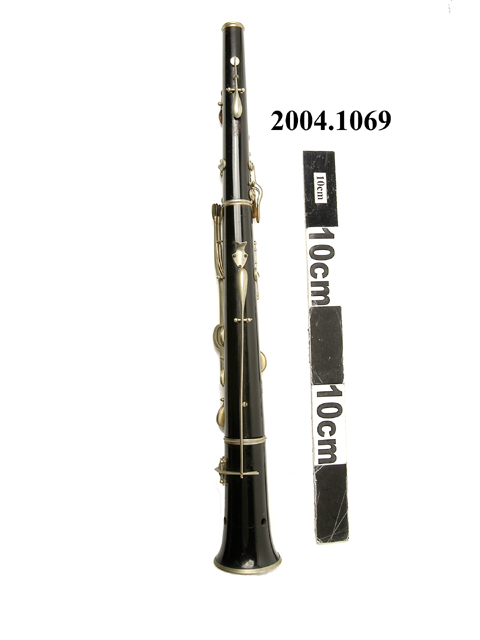
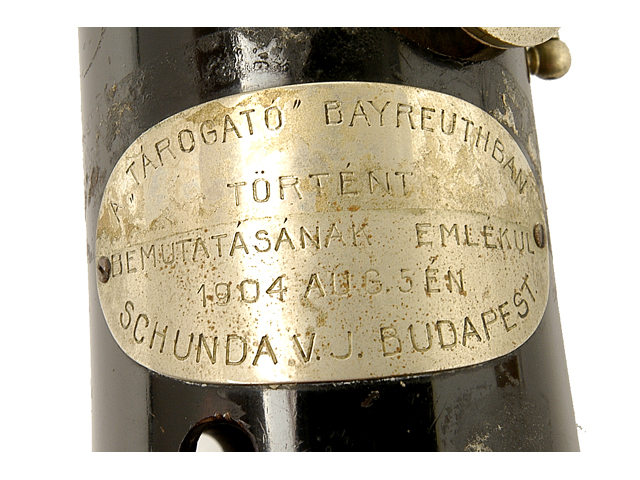
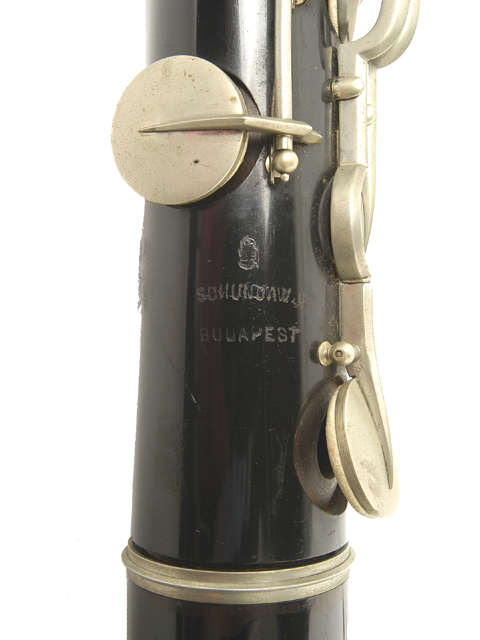
Tárogató, made of ebonised wood, probably Brya ebenus (cocuswood). Nickel silver plated ferrules, springs and keywork with ebonite rollers on little finger keys. Twelve-keys with leather pads. Tenons are lapped with string. The mouthpiece is missing. The maker's plaque bears the inscription: TAROGATO BAYREUTHBAN TORTENT BEMUTATASANAK EMLEKUL 1904 AUG. 5EN SCHUNDA V.J. BUDAPEST.
The tárogató is a national instrument of Hungary, originating from the shawm. The tárogató was brought to Covent Garden, London by Hans Richter at the turn of the 20th century. Richter used the tárogató for the part of the Shepherd's pipe in Wagner's Tristan and Isolde. At Richter's suggestion, the tárogató was also used as a substitute for the shofar in performances of Elgar's Apostles by the Hallé Orchestra, Manchester. This particular tárogató was played by Leonard Brough on many such occasions.



